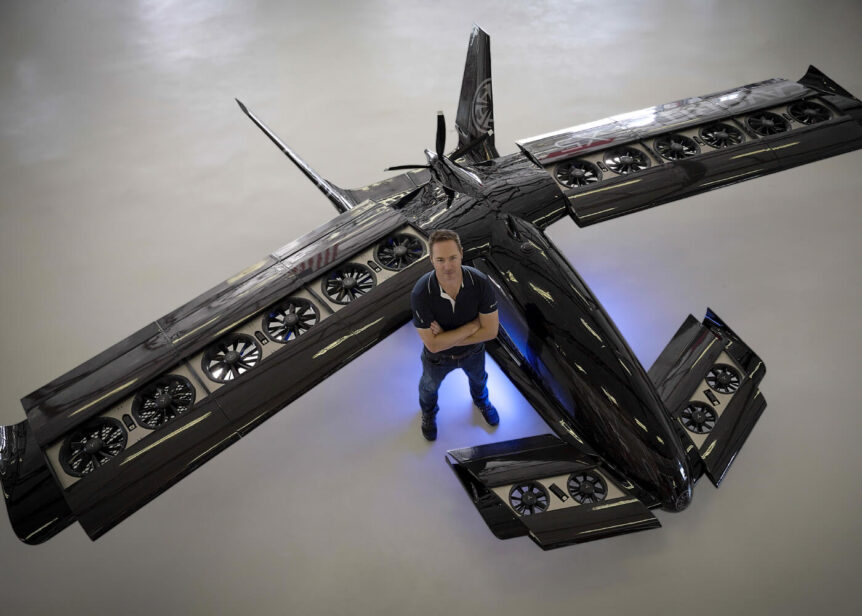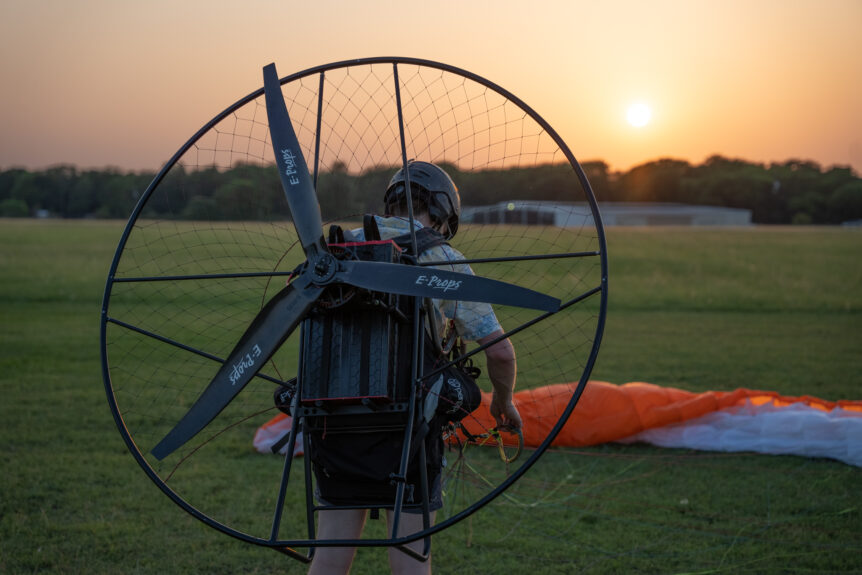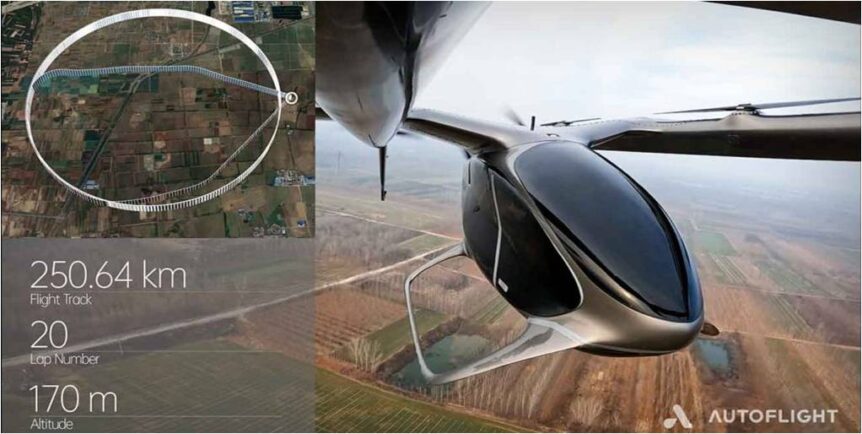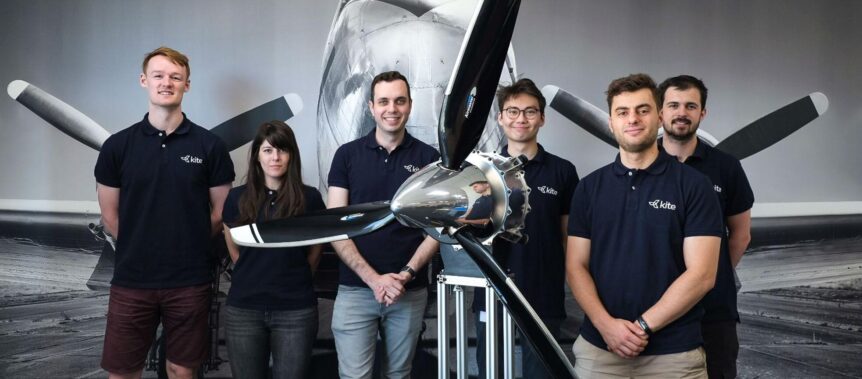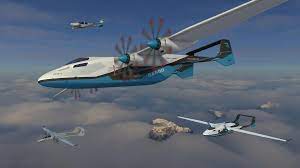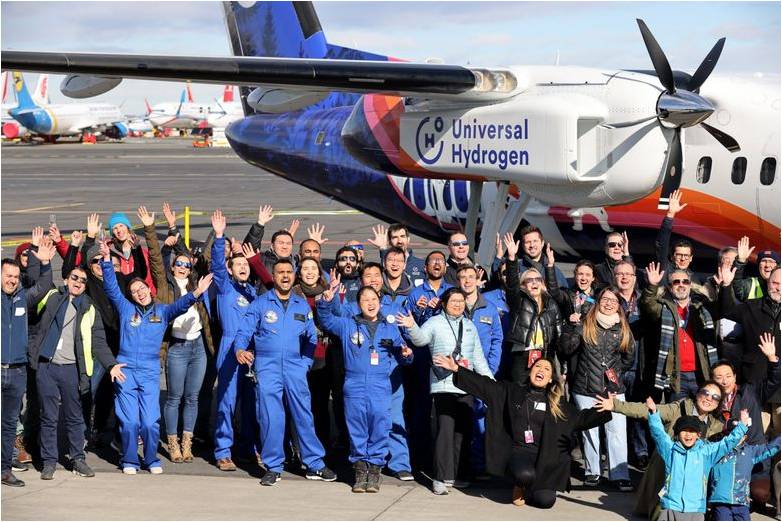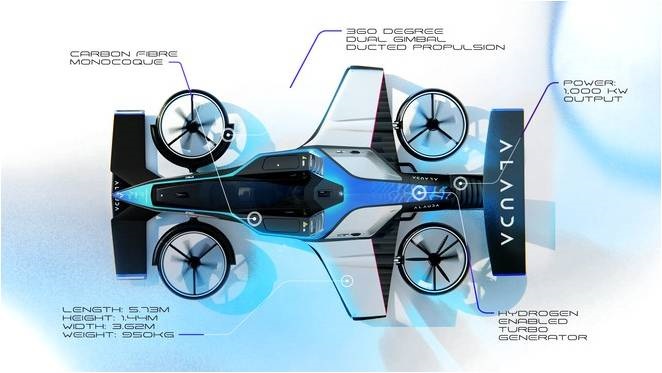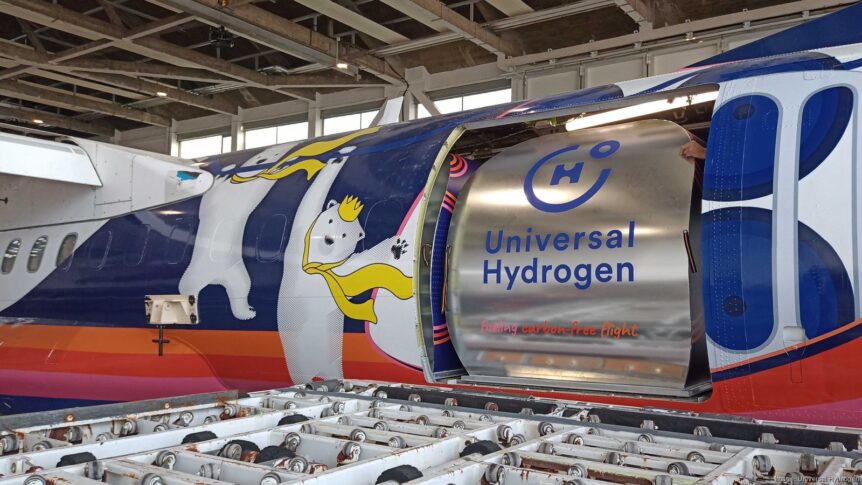The Cavorite X5, now in developmental test flights, that came from the inspiration of H. G. Wells. Cavorite was the mysterious metal in Wells’ First Men in the Moon, discovered by Dr. Cavor. He explains it to his friends, who are attempting to reach the earthly satellite: “Well, so soon as it reached a temperature of 60 Fahr[enheit], and the process of its manufacture was complete, the air above it, the portions of roof and ceiling and floor above it ceased to have weight. I suppose you know – everybody knows nowadays – that, as a usual thing, the air has weight, that it presses on everything at the surface of the earth, presses in all directions, with a pressure of fourteen and a half pounds to the square inch? ” “I know that,” said I. “Go on.” “I know that too,” he remarked. “Only this shows you how useless knowledge is unless you apply it. You see, over our …
Heart Aerospace, BAE Collaborate on Batteries
Heart Aerospace, a Swedish startup, has teamed with BAE Systems, a veteran British aerospace supplier, to help with powering its 30-seat, battery-powered airliner. The four-motor craft will include a very large battery pack under the passenger compartment. The need for safety should be obvious. Adding eleven seats to its original 19-seat platform, Heart also brings a turbo generator on board, enabling flights up to 400 kilometers (250 miles) with 30 passengers, or even 800 kilometers (500 miles) with 25. These figures include normal airline range reserves. Partners include BAE Systems, Swedish aerospace group Saab, avionics supplier Garmin, and Aernnova, a Spanish airframe specialist. BAE’s UK-based group’s Controls and Avionics Solutions operation in upstate New York will oversee the batteries and their control and monitoring. This fits BAE’s expertise, with more than 25 years of experience electrifying large, heavy-duty industrial vehicles with over 15,000 power and propulsion systems in service worldwide. This will be critical considering the placement of the batteries. …
Electric Pterodactyl is a Blast from the Past
Cory O’Neill recently test flew a special conversion of a classic ultralight, the Electric Pterodactyl Ascender. Rising from the desert near Pahrump, Nevada, the light canard was propelled by an open-source power paraglider motor and battery pack – all neatly bundled in a back-pack-size unit. A True Cross-Country Trip An early flying wing version of what became the Pterodactyl, the Pfledge lacked a canard and relied on a combination of weight shift and aerodynamic controls. Its designer, Jack McCornack and an early customer, Dave Froble, flew a pair of these craft from Monterrey, California to the 1979 Experimental Aircraft Association fly-in at Oshkosh, Wisconsin. According to Ultralight News.com, “They made a big stir in Oshkosh that year – it is still referred to as ‘the year that ultralights really caught on’. At Oshkosh the editor of the Mother Earth News, an ecological publication, challenged the pair to fly on to Kitty Hawk, [North Carolina] on pure ethanol and offered to …
Nudging, Then Doubling an Electric Distance Record
Suddenly, we’re seeing new electric aircraft nudging, then doubling an electric distance record. First, Autoflight in China and then Beta in America achieve higher ranges than that previously achieved by Joby. Jules Verne Saw It Coming In two late 19th-century novels, Robur the Conqueror and Master of the World, Jules Verne chronicled the fictional adventurers of a mad inventor who thought he could dissuade world leaders from practicing war by bombing them from his Albatross flying warship. A great deal like Captain Nemo of Nautilus fame, Robur uses violence to stop violence. Both protagonists fail in their efforts. The Albatross, mistaken as its objectives were, is perhaps an inspiration for today’s eVTOLs, propellers spinning for lift and for forward motion. Verne even prophesied fueling the Albatross with water, perhaps an early vision of today’s water-splitting to produce green hydrogen. Autoflight With far fewer rotors and propellers, Autoflight achieved a successful transition flight from vertical liftoff to forward flight. This delicate …
Monash Makes Motors – and Fuel from Thin Air
Monash University announced a new type of electric aircraft motor and the promise of a fuel that could power everything from your smart watch to your airplane in the future. Both rely on unique ways of seeing the physical world around us. The Kite Magnetic Motor Charles Alcock, writing for FutureFlight.com, discusses Kite Magnetics’ 120 kilowatt (160 horsepower) electric propulsion unit (EPU) intended for a variety of light aircraft applications. part of a program at Monash University in Melbourne, Australia, the motor could find applications in “conventional fixed-wing aircraft, as well as eVTOL and eSTOL designs, high-altitude satellites, and wing-in-ground craft,” according to the University. At its core, the motor relies on the University’s patented Aeroperm™ magnetic material. This lightweight nanocrystalline substance is part of a soft amorphous metal matrix. Unlike traditional iron materials in motors, however, Aeroperm does not exhibit iron’s normal “lossiness.” Instead, it loses energy at “one-tenth the rate of existing magnetic materials used in current electrical …
APUS Offers Two Hydrogen-powered Aircraft
Designs to Fly “Without Harm for the Climate” APUS (Latin for swift bird) has announced two aircraft, the i-2 and i-5, that will offer either zero emission or very low emission flight. The designs represent some highly innovative thinking and excellent performance. APUS states its mission as, “Flying without any Harm for Climate!” To that end, they are developing four craft that will fly on green hydrogen power. Partnered with, “PowerCell (Hydrogen Fuel Cells), Fraunhofer (High-Voltage applications), COTESA (hydrogen storage solutions) and HEGGEMANN (hydrogen supply and safety systems) we are developing certified powertrain units for emission-free air transportation applications.” APUS i-2, Zero-Emission General Aviation Aircraft In a recent discussion with CEO Dipl.-Ing.Phillip Scheffel; Laurent Altenberger ,an Aerospace Project and Supply Chain Management Consultant in Business Development; and Dipl.-Ing. Robert Adam, a company co-founder and head of powertrain development, your editor learned how committed APUS is in the matter of promoting environmentally friendly flight. APUS itself goes back to the 2011 …
Biggest yet from Universal Hydrogen
Universal Hydrogen flew the largest hydrogen-powered aircraft yet at Grant County Airport in Moses Lake, Washington. The DeHavilland Dash 8 was powered on its right side by a MagniX motor and fueled by H2 from a pair of containers in the rear of the fuselage. It made a 15 minute flight to 3,500 feet and settled back to a safe landing It carried “the largest hydrogen fuel cell ever to power an aircraft, “and Universal Hydrogen co-founder and CEO Paul Eremenko “declared the moment the dawn of a new golden age of aviation.” Prep for flight Lightning McClean, Universal’s modified Dash 8, normally flies with up to 50 passengers. The penalty for using H2 for fuel is giving up 10 of those revenue-producing seats, Universal’s Plug Power containers taking up the back rows of the cabin. Other gear included a rigorous evaluation of every component and system, the Dash 8 was ready for taxiing and test flights. Two large hydrogen …
Alauda AirspeederMK4 and AMSL Speed Toward Records
Alauda and AMSL – two companies down under – are pressing ahead on divergent missions, but both powering “flying cars” with hydrogen. Both craft will achieve higher speeds and cover longer ranges than most other electric Vertical Take Off and Landing (eVTOL) craft. Alauda Airspeeder MK4 Alauda’s brief history of creating Airspeeders hits its latest iteration, the MK4. It replaces batteries with a 1,000 kilowatt hydrogen-fueled turbo generator driving ducted fans in place of previous open rotors. Up to now, the various Marks were remotely controlled and battery powered. MK4s will be “crewed” and powered by green hydrogen. Evolved over the last few years, MK4 will be much faster than its 100 kilometer per hour predecessors, and we hope, more controllable. Remotely controlled crashes, as shown in this2022 MK3 race, are no more harmful to human operators than a video game – although probably more costly. Looking a great deal like a Formula 1 or Formula e race car, the …
Universal Hydrogen Certified, Ready to Fly
On February 7, 2023, Universal Hydrogen received a Special Airworthiness Certificate in the Experimental category from the Federal Aviation Administration. This will allow their DeHavilland Dash 8-300 to begin test flights. Universal boasts their craft will be the largest hydrogen fuel cell-powered aircraft ever to fly. Up to now, it’s been performing taxi tests and motor runups, getting ready for the big day. On a Mission Universal Hydrogen’s web site opens with this statement: “Our mission is to put aviation on a trajectory to meet Paris Agreement emissions targets by making hydrogen-powered commercial flight a near-term reality.” The coming flight tests are a major step toward fulfillment of that mission. Inclusion of the large hydrogen-carrying modules reduces passenger carrying capacity to 40 seats. But, the modules allow easy loading and unloading and “eliminate the need for costly new infrastructure, with any airport capable of handling cargo being hydrogen-ready.” Paul Eremenko, co-founder and CEO of Universal Hydrogen, explains, “We are simultaneously …
NUNCATS’ Electric Zenith Flies
NUNCATS: No Unnecessary Novelty Community Air Transport Services. A Mission NUNCATS, as your editor mused, is not a hip religious order, but a determined husband and wife team intent on doing good in the world with electric aeronautics. They proclaim their mission as, “To provide a dependable lifeline for the world’s remote communities, to offer hands-on experience and STEM learning opportunities, and enable sports flyers to convert to cleaner, greener energy.” They add a practical approach to their mission. “We deliver this by integrating the existing technologies of proven light aircraft, electric propulsion, and solar power generation, for maximum social and environmental impact. We are augmenting existing microgrid installations and providing the necessary infrastructure where needed.” Their All-electric Zenith “Sky Jeep” completed its first flight on January 20, 2023. The group has plans “to transport doctors and medical supplies in remote areas of the world.” The Sky Jeep, a Zenith CH 750 Cruzer has big tires and the ability to …

